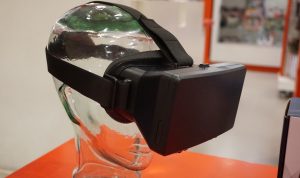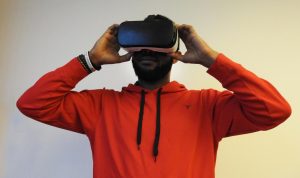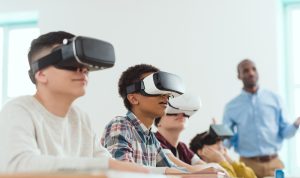Home Design Made Easy with AR Apps opens a new frontier in interior design, allowing homeowners and enthusiasts to visualize their spaces through innovative technology. Augmented Reality (AR) applications have transformed the way we approach home design by providing immersive experiences that were once limited to imagination. This technology not only empowers individuals to experiment with different styles and layouts but also enhances the decision-making process by bridging the gap between concept and reality.
As users interact with AR tools, they can manipulate virtual design elements within their actual environments, making it easier to assess color schemes, furniture arrangements, and overall aesthetics. The integration of AR in home design democratizes the process, inviting everyone to partake in the creative journey regardless of their expertise. This convergence of technology and creativity is reshaping the landscape of home design.
In the contemporary world, the evolution of technology deeply influences various facets of human life, particularly education. This article explores the significant impact of technology on education, specifically focusing on how it transforms teaching methodologies, enhances learning experiences, and prepares students for a technology-driven future. The rapid advancement of digital tools and resources has created unprecedented opportunities and challenges for educators and learners alike.
First and foremost, the integration of technology in education has revolutionized teaching methodologies. Traditional teaching methods, characterized by passive learning and one-way communication, are increasingly being replaced by interactive and student-centered approaches. For instance, the use of smartboards, educational software, and online platforms enables teachers to engage students more actively in the learning process. These tools facilitate collaboration and discussion, allowing students to share ideas and work together on projects, which enhances not only their understanding of the subject matter but also their critical thinking and interpersonal skills.Moreover, technology allows for a personalized learning experience tailored to individual students’ needs.
With the advent of adaptive learning technologies, educators can assess students’ strengths and weaknesses and provide customized learning paths that accommodate diverse learning styles. For example, platforms like Khan Academy and Duolingo employ algorithms that adapt the content based on users’ performance, ensuring that they progress at their own pace. This individualized approach is particularly beneficial for students with learning disabilities or those who require additional support, as it gives them the flexibility to learn in a manner that suits them best.In addition to personalized learning, technology has significantly expanded access to educational resources.
With the rise of the internet, a wealth of information is available at students’ fingertips. Online libraries, academic journals, and educational websites offer a plethora of materials that were previously inaccessible to many learners. Furthermore, open educational resources (OER) provide high-quality instructional materials that can be freely used and shared, thereby reducing educational costs and promoting equity in education. The democratization of knowledge through technology empowers students from diverse backgrounds to pursue their academic interests without the financial burdens associated with traditional textbooks and resources.The role of technology in enhancing learning experiences cannot be understated.
Multimedia resources such as videos, podcasts, and interactive simulations engage students in ways that traditional textbooks cannot. For example, virtual reality (VR) and augmented reality (AR) applications can immerse students in historical events or complex scientific concepts, providing experiential learning opportunities that deepen understanding. Such immersive experiences cater to various learning preferences, making education more engaging and effective for a broader audience.Furthermore, technology facilitates real-time feedback and assessment, which is crucial for effective learning.
Tools such as online quizzes, formative assessment platforms, and learning management systems (LMS) enable educators to monitor student progress continuously. This immediate feedback loop allows teachers to identify areas where students may be struggling and adjust their instruction accordingly, ensuring that no student is left behind. Additionally, students can track their own progress and take ownership of their learning journey, fostering a sense of responsibility and motivation.Despite the numerous advantages that technology brings to education, it is essential to acknowledge the challenges that accompany this integration.

One significant concern is the digital divide, which refers to the gap between those who have access to technology and those who do not. Students from low-income families or underserved communities may lack the necessary devices or reliable internet connectivity to benefit fully from digital learning resources. This disparity can exacerbate existing inequalities in education, making it imperative for policymakers and educational institutions to address these issues and ensure equitable access to technology for all students.Moreover, the over-reliance on technology can lead to negative consequences, such as decreased face-to-face interactions and social skills.
While online collaboration tools facilitate remote communication, they cannot entirely replace the value of in-person interactions. Educators must strive to find a balance between utilizing technology and fostering meaningful interpersonal relationships among students. Developing social emotional skills, such as empathy and teamwork, remains an essential component of education that must not be overlooked.Furthermore, the rapid pace of technological change requires continuous professional development for educators.
Teachers must stay current with the latest tools and techniques to effectively integrate technology into their classrooms. This ongoing training not only enhances their teaching practices but also equips them with the skills needed to guide students in navigating the digital landscape responsibly. Therefore, educational institutions should prioritize investing in professional development programs to support teachers in becoming proficient technology users.As we look to the future, it is essential to consider how technology will continue to shape education.
The emergence of artificial intelligence (AI) and machine learning presents both exciting possibilities and ethical dilemmas. AI-driven tools have the potential to further personalize learning experiences, but they also raise questions about data privacy and the role of educators in assessing student progress. It is crucial to approach the integration of AI in education thoughtfully, ensuring that ethical considerations guide its development and use.In conclusion, the impact of technology on education is profound and multifaceted.
From transforming teaching methodologies to enhancing learning experiences and promoting equitable access to resources, technology has the potential to create a more effective and inclusive educational landscape. However, it is vital to address the challenges associated with this integration, including the digital divide and the need for ongoing professional development for educators. As we embrace the future of education, it is crucial to strike a balance between leveraging technology and nurturing essential human skills that will prepare students for success in an ever-evolving world.
By fostering a thoughtful and strategic approach to technology in education, we can empower learners to thrive in a technology-driven society.





